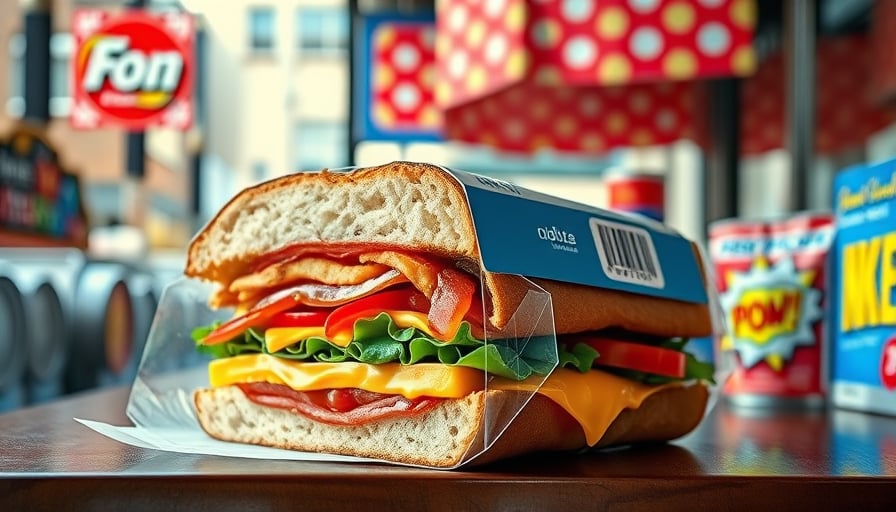J M Smucker Co. Faces Trademark Battle with Trader Joe’s: Implications for Consumer‑Goods Strategy
The recent lawsuit filed by J M Smucker Co. against Trader Joe’s over alleged infringement of the Uncrustables trademark illustrates a broader trend in the consumer‑goods sector: brands are increasingly vigilant in protecting distinctive product designs and packaging as drivers of consumer loyalty. While the direct financial impact of the litigation is presently difficult to quantify, the case signals shifts in how companies manage intellectual property (IP) in an era of rapid product proliferation, omnichannel distribution, and heightened regulatory scrutiny.
1. Consumer‑Goods Trends and the Value of Design IP
Across the food‑service and packaged‑goods markets, packaging innovation continues to be a key differentiator. A 2023 Nielsen study found that 68 % of consumers perceive branded packaging as a decisive factor when choosing between competing products in grocery aisles. In the United States, the Uncrustables franchise alone generated an estimated $1.2 billion in annual retail sales, a figure that underscores the economic weight of a single, well‑designed product. As retailers like Trader Joe’s expand their private‑label offerings, they increasingly emulate successful designs, prompting trademark disputes similar to the one currently underway.
The litigation highlights a strategic imperative for established brands: robust IP enforcement not only safeguards revenue streams but also reinforces brand equity. In a market where consumer attention is fragmented across physical stores, online marketplaces, and subscription services, a protected visual identity becomes a resilient asset that can be leveraged in cross‑channel promotions and limited‑edition collaborations.
2. Omnichannel Retailing and Brand Positioning
Retailers today operate in a hybrid ecosystem. Online platforms provide data on purchase intent, while brick‑and‑mortar stores offer experiential touchpoints that reinforce brand narratives. Trader Joe’s, known for its curated assortment and store‑centric experience, has cultivated a loyal customer base that values perceived value and convenience. By offering a crustless peanut‑butter‑and‑jelly sandwich that mimics the Uncrustables design, the chain signals an attempt to capture a niche segment of on‑the‑go consumers who are accustomed to the convenience of Smucker’s product.
From a strategic perspective, Smucker’s must align its IP strategy with its omnichannel footprint. Protecting design elements across physical shelves and digital listings ensures that brand consistency is maintained regardless of purchase channel. Moreover, a strong IP stance can unlock partnerships with retailers seeking exclusive product lines, thereby reinforcing Smucker’s positioning as a premium, differentiated brand.
3. Shifts in Consumer Behavior
Recent market data reveal a gradual pivot toward healthier, convenience‑oriented snack options. According to Euromonitor International, the global market for grab‑and‑go sandwiches grew 4.8 % annually between 2019 and 2023. Consumers increasingly prioritize nutrient‑dense ingredients and clear labeling, which have become competitive differentiators. In this landscape, a trademark dispute can influence consumer perception—both positively and negatively.
Positive reinforcement may arise from Smucker’s demonstration of brand stewardship, potentially enhancing trust among health‑conscious shoppers. Conversely, the visibility of legal contention could deter some price‑sensitive consumers who perceive the product as part of an ongoing conflict. Smucker’s must therefore navigate the narrative carefully, emphasizing product quality and innovation while maintaining transparency about IP enforcement.
4. Supply‑Chain Innovations and Resilience
The case underscores the importance of supply‑chain agility. Smucker’s has historically maintained a vertically integrated model, controlling everything from ingredient sourcing to distribution. However, the proliferation of private‑label competitors like Trader Joe’s forces incumbent brands to reevaluate supply‑chain strategies to sustain margins and market share. Recent industry reports indicate a shift toward modular production facilities that can quickly adapt to new product designs, thereby reducing lead times and lowering the risk of IP duplication.
Additionally, the pandemic‑induced acceleration of e‑commerce logistics has made real‑time inventory visibility and rapid replenishment critical. Brands that can align production volumes with precise omnichannel demand forecasts—especially for high‑visibility items like Uncrustables—are better positioned to capitalize on fleeting consumer trends and mitigate the risk of stockouts that could otherwise benefit competitors.
5. Short‑Term Market Movements vs. Long‑Term Transformation
In the immediate aftermath of the lawsuit announcement, Smucker’s stock experienced a modest 2.5 % decline, reflecting investors’ uncertainty about potential litigation costs and the likelihood of a favorable ruling. Analysts note that while the legal outcome remains uncertain, the strategic response—through enhanced IP monitoring, targeted marketing, and supply‑chain optimization—will likely shape the company’s trajectory over the next 3–5 years.
Looking ahead, the case may accelerate industry-wide adoption of design‑centric IP frameworks. Companies are likely to invest in advanced design analytics tools, employing machine learning to detect design similarities before they reach market. Retailers may also refine their private‑label strategies to avoid costly disputes, focusing instead on co‑branded or original design collaborations that offer clear differentiation.
6. Conclusion
The Uncrustables trademark dispute between Smucker’s and Trader Joe’s exemplifies a critical juncture in the consumer‑goods industry: brands must reconcile the demand for rapid product innovation with the necessity of protecting distinctive design assets. By integrating robust IP enforcement into omnichannel strategies, adapting supply‑chain architectures for agility, and responding to evolving consumer preferences, Smucker’s can convert a short‑term legal challenge into a long‑term competitive advantage. The broader sector will likely follow suit, leveraging cross‑sector insights to forge resilient, brand‑centric models that withstand the pressures of an increasingly complex retail ecosystem.
